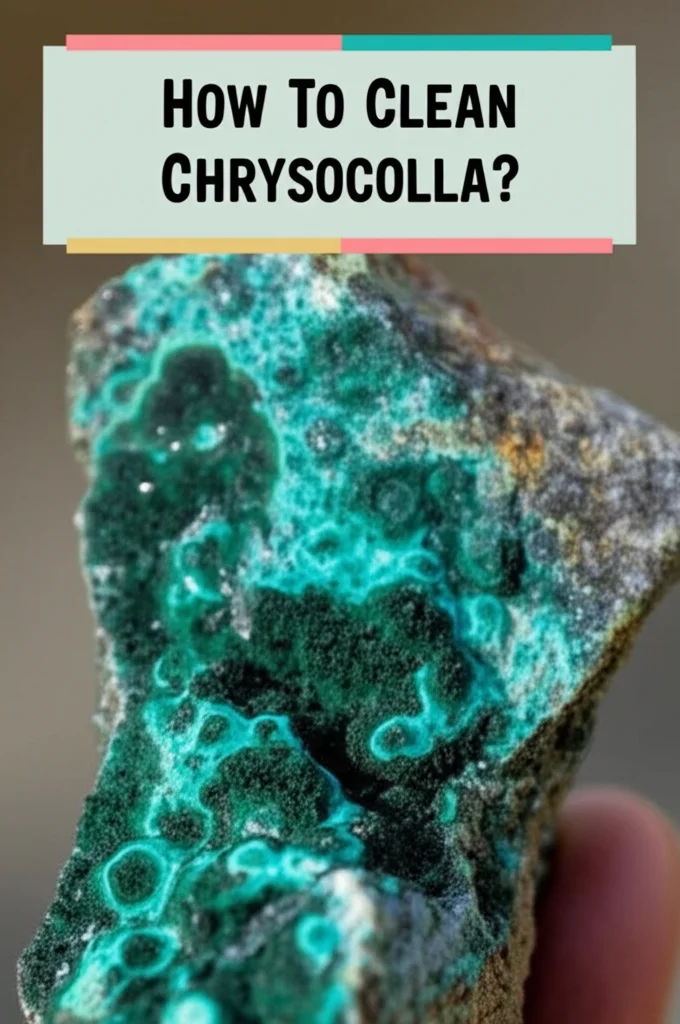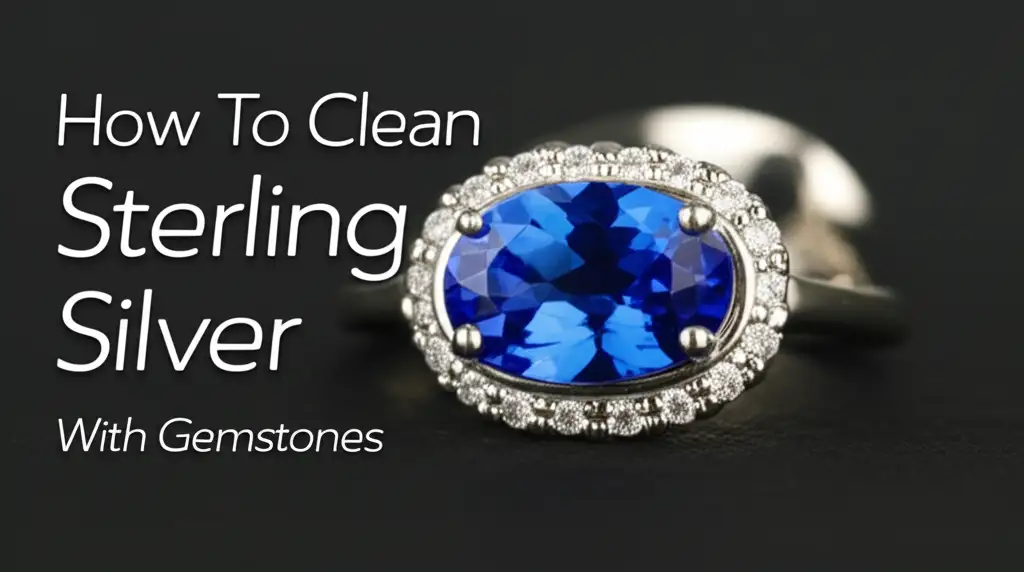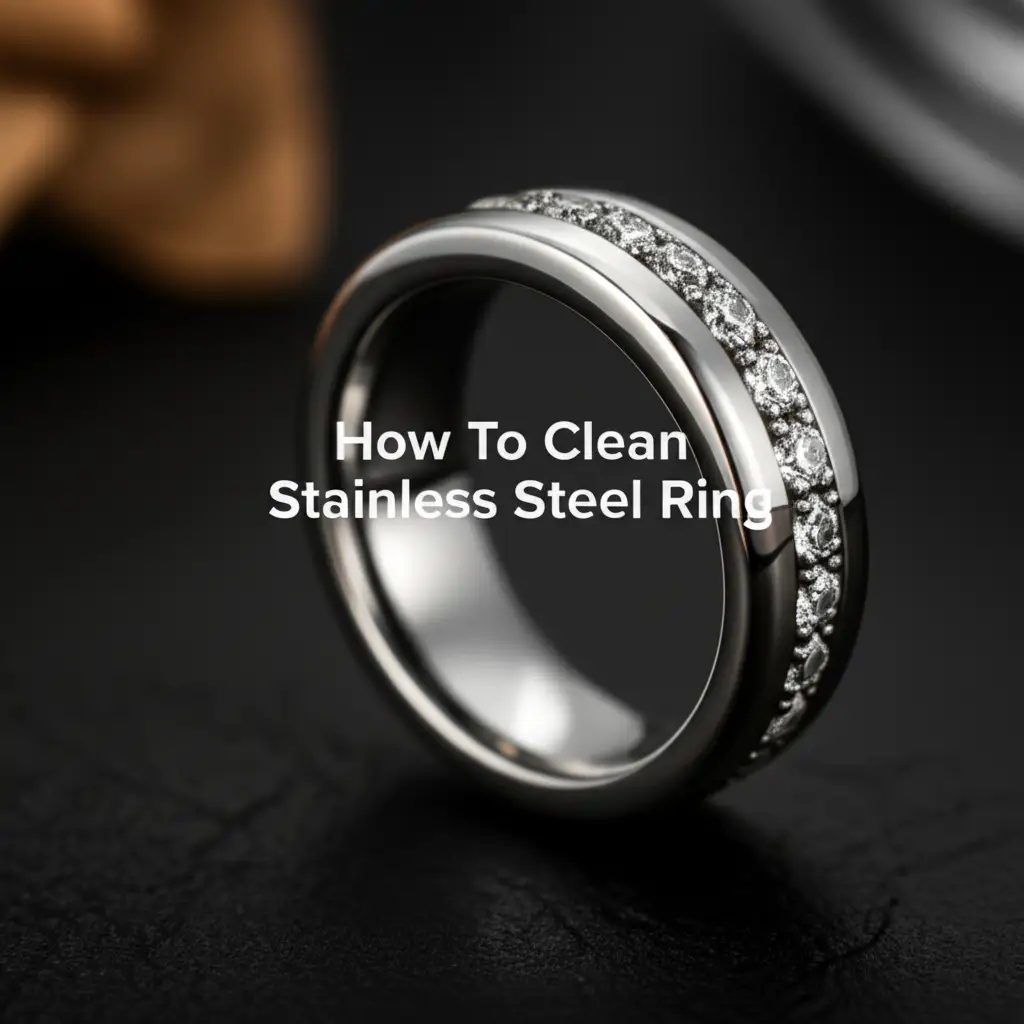· Gemstone Care · 6 min read
How To Clean Chrysocolla?

Cleaning Chrysocolla: A Gentle Guide to Preserving its Beauty
Have you ever been captivated by the swirling blues and greens of chrysocolla? This stunning gemstone, often resembling a miniature landscape, is a favorite among jewelry lovers. But like all beautiful things, chrysocolla requires proper care to maintain its luster. This article will guide you through the best methods for cleaning chrysocolla, ensuring it remains a cherished piece for years to come. We’ll cover everything from daily care to deeper cleaning techniques, all while protecting its delicate nature. Let’s dive into how to keep your chrysocolla sparkling!
Quick Answer: To clean chrysocolla, gently wipe it with a soft, damp cloth and mild soap. Avoid harsh chemicals, ultrasonic cleaners, and prolonged water exposure. Dry thoroughly with a soft cloth.
Takeaway:
- Handle chrysocolla with care due to its softness.
- Use only gentle cleaning methods.
- Avoid harsh chemicals and abrasive materials.
- Dry thoroughly after cleaning.
Understanding Chrysocolla and Its Sensitivity
Chrysocolla is a hydrated copper phyllosilicate mineral. That’s a mouthful, but it essentially means it’s a relatively soft stone, ranking between 2.5 and 3.5 on the Mohs hardness scale. This softness makes it susceptible to scratches and damage from harsh cleaning methods. Understanding this is the first step in properly caring for your chrysocolla. It’s also porous, meaning it can absorb liquids and chemicals, potentially causing discoloration or weakening the stone. Therefore, a gentle approach is always best.
What Makes Chrysocolla Unique?
Chrysocolla’s beauty lies in its vibrant colors, ranging from sky blue to deep turquoise and even shades of green. These colors are due to the presence of copper. Often found in association with other minerals like malachite and azurite, chrysocolla’s patterns are unique to each stone. This unique composition also contributes to its sensitivity, making careful cleaning essential. The stone is often used in jewelry, carvings, and ornamental objects.
Daily Care for Your Chrysocolla Jewelry
Preventative care is the easiest way to keep your chrysocolla looking its best. Simple habits can significantly reduce the need for deep cleaning. Think of it like this: a little effort each day saves a lot of work later. Here’s how to incorporate daily care into your routine.
- Remove jewelry during activities: Take off rings, bracelets, and necklaces before exercising, cleaning, gardening, or any activity that could expose the stone to impact or harsh chemicals.
- Avoid lotions and perfumes: These products can contain chemicals that dull the stone’s surface or seep into its pores. Apply these before putting on your jewelry.
- Store properly: Store chrysocolla jewelry separately from other pieces to prevent scratches. A soft pouch or jewelry box with individual compartments is ideal.
- Gentle wipe down: After each wear, gently wipe the stone with a soft, dry cloth to remove any dust or oils.
The Best Way to Clean Chrysocolla: A Step-by-Step Guide
For a more thorough cleaning, follow these steps. This method is suitable for both polished chrysocolla and jewelry pieces. Remember, patience and gentleness are key!
- Prepare a mild cleaning solution: Mix a few drops of mild dish soap (like Dawn) with lukewarm water. Avoid using harsh detergents or abrasive cleaners.
- Dip a soft cloth: Dampen a soft cloth (microfiber is ideal) with the cleaning solution. Ensure the cloth is damp, not soaking wet.
- Gently wipe the chrysocolla: Carefully wipe the stone, removing any dirt or grime. Avoid applying excessive pressure.
- Rinse with clean water: Use a separate soft cloth dampened with clean, lukewarm water to rinse away any soap residue. Again, avoid soaking the stone.
- Dry thoroughly: Pat the chrysocolla dry with a clean, soft cloth. Ensure it’s completely dry before storing it.
What to Avoid When Cleaning Chrysocolla
Knowing what not to do is just as important as knowing what to do. Certain cleaning methods can permanently damage your chrysocolla. Let’s look at what to avoid.
- Ultrasonic cleaners: The vibrations can damage the stone’s structure.
- Steam cleaners: The heat and pressure can be too harsh.
- Harsh chemicals: Avoid ammonia, bleach, acetone, and other strong chemicals.
- Abrasive materials: Never use scouring pads, abrasive cleaners, or even stiff brushes.
- Prolonged water exposure: Chrysocolla is porous and can absorb water, potentially leading to damage.
- Hot water: Use only lukewarm water.
Cleaning Chrysocolla in Jewelry Settings
Cleaning chrysocolla set in jewelry requires extra care. You need to protect not only the stone but also the metal setting. Here’s how to approach it.
- Check the setting: Ensure the chrysocolla is securely set. If it’s loose, take it to a jeweler for repair before cleaning.
- Clean the setting first: Use a jewelry cleaner specifically designed for the metal of your setting (silver, gold, etc.) to remove any dirt or tarnish. You can find excellent silver cleaning solutions here.
- Gently clean the chrysocolla: Follow the step-by-step guide above, being extra careful around the setting.
- Dry thoroughly: Pay attention to drying around the setting to prevent water from getting trapped.
Caring for Chrysocolla with Delicate Settings
If your chrysocolla is set in a particularly delicate setting, such as filigree or with small accent stones, consider taking it to a professional jeweler for cleaning. They have the expertise and tools to clean it safely and effectively. Sometimes, professional cleaning is the best option to avoid any risk of damage.
Addressing Stubborn Dirt and Discoloration
Sometimes, despite your best efforts, chrysocolla may develop stubborn dirt or discoloration. Here are a few tips for addressing these issues.
- For light discoloration: Try gently rubbing the stone with a soft cloth dampened with a mixture of water and a tiny amount of baking soda. Rinse thoroughly and dry.
- For sticky residue: Use a cotton swab dampened with a small amount of rubbing alcohol to carefully remove the residue. Rinse immediately and dry.
- If problems persist: Consult a professional jeweler. They may be able to offer more specialized cleaning solutions.
Frequently Asked Questions About Cleaning Chrysocolla
Q: Can I use a toothbrush to clean my chrysocolla? A: No, even a soft-bristled toothbrush can be too abrasive for chrysocolla. Stick to soft cloths.
Q: Is it okay to soak my chrysocolla jewelry in water? A: No, prolonged water exposure can damage chrysocolla. Avoid soaking it.
Q: How often should I clean my chrysocolla jewelry? A: Clean it as needed, typically every few weeks with a gentle wipe-down, and a more thorough cleaning a few times a year.
Q: Will polishing restore the shine to my chrysocolla? A: Polishing is generally not recommended for chrysocolla as it can remove the surface layer and alter its appearance.
Q: Can I use commercial jewelry cleaners on chrysocolla? A: Avoid most commercial jewelry cleaners, as they often contain harsh chemicals. If you choose to use one, test it on an inconspicuous area first.
Conclusion: Keeping Your Chrysocolla Radiant
Cleaning chrysocolla doesn’t have to be a daunting task. By following these simple guidelines, you can keep your chrysocolla jewelry looking beautiful for years to come. Remember, gentleness is key! Avoid harsh chemicals and abrasive materials, and always dry the stone thoroughly. With a little care, your chrysocolla will continue to captivate with its unique and stunning beauty. If you’re unsure about any cleaning method, it’s always best to consult a professional jeweler. Enjoy the vibrant colors and natural elegance of your chrysocolla!
- chrysocolla cleaning
- gemstone care
- jewelry cleaning




